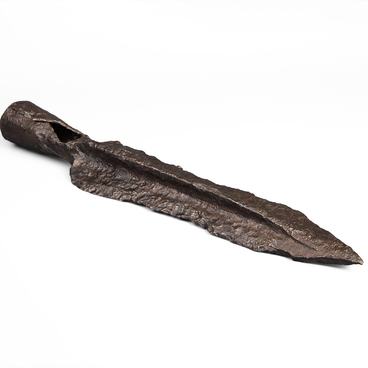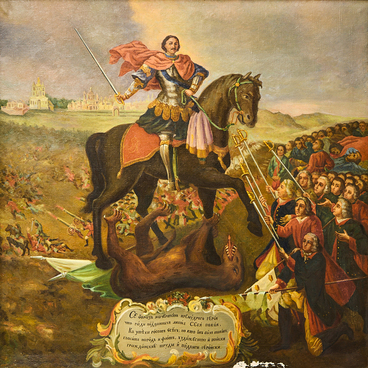The painting “Government Troops Defeated by the Bulavin Rebels on the Urazovka River in 1708,” included in the collection of the Belgorod State Museum of Local History, was painted in the year of the 255th anniversary of the battle on the Urazovka River by the artist Leonid Aleksandrovich Shmatko.
At the beginning of the 18th century, spontaneous peasant uprisings broke out in the central regions of Russia, in the Volga region and on the southern outskirts of the country. The peasants attacked landowners, seized their property, and burned their estates. These isolated outbursts of popular indignation culminated in the Peasant Revolt of 1707–1708 under the leadership of Kondraty Bulavin. The unrest was sparked by attempts to limit Cossack self-government and constant expeditions to capture runaway peasants in Cossack lands.
The population of the Belgorod Region rose decisively in rebellion in the spring of 1708. At that time, a detachment led by Ataman Semyon Drany appeared on the Seversky Donets, and the uprising spread to the Poltava, Userdsky and Valuysky districts, where the inhabitants formed a rebel detachment under ataman Nikita Goly. Atamans Semyon Drany, Sergey Bespaly, and Nikita Goly defeated the Tsar’s commanders.
Their most significant victory was achieved at Valuyki near the Urazova River, where on the night of June 8, 1708, they defeated the Sumy Cherkassy regiment, which was part of the punitive forces. The local residents aided the Bulavin rebels in this victory: one of the Valuyki locals, disguised as a merchant, infiltrated the regiment’s camp, gathered intelligence, and at night led Nikita Goly’s detachment into the camp. The officers were killed, and the soldiers joined the rebels. A lot of artillery was captured.
The further advance of the Bulavin rebels northward
was halted by the Tsar’s troops. In July, Kondraty Bulavin and Semyon Drany
were killed, and the rest of the atamans retreated to the Kuban. On the Don and
Seversky Donets, only the detachments of ataman Nikita Goly continued to fight.
The detachments were going to march on Moscow. But this plan was never
realized. Prince Vasily Dolgoruky came out against them with great force. As a
result, the rebellion was brutally suppressed. The captured fugitive peasants
were returned to their owners, some villages were destroyed to the ground.
About a third of the Don population perished. The Don Cossacks permanently lost
their independence.


